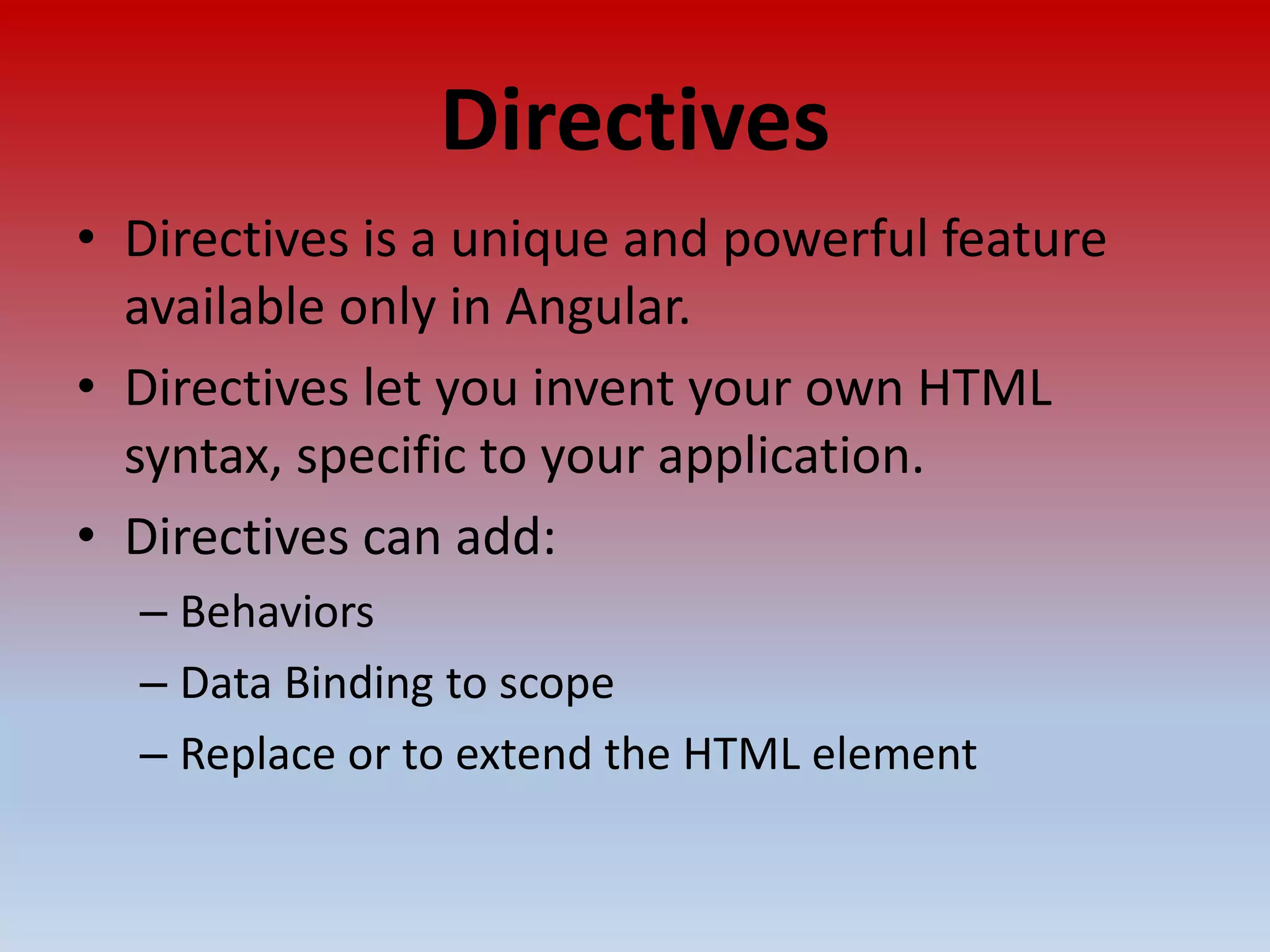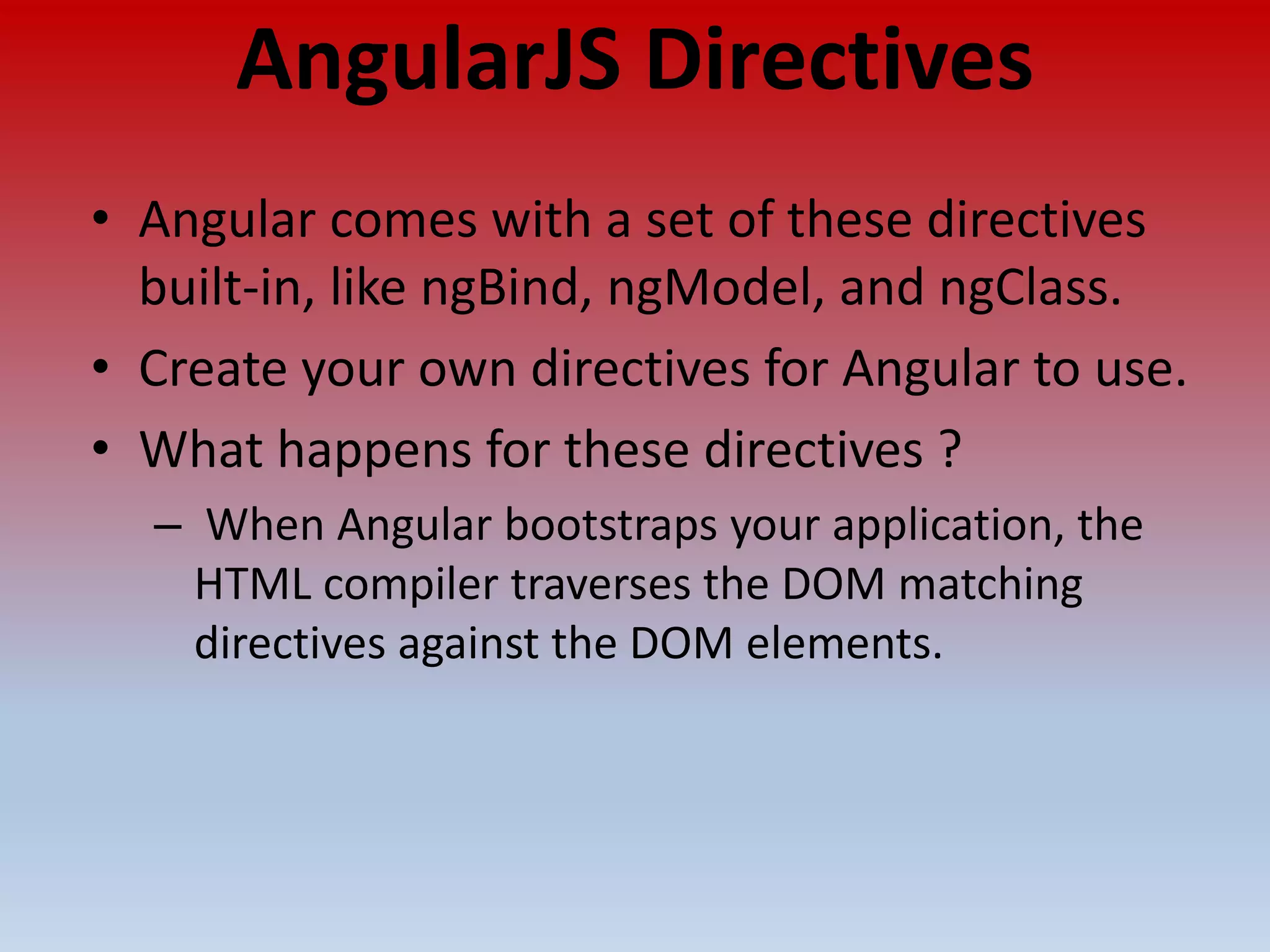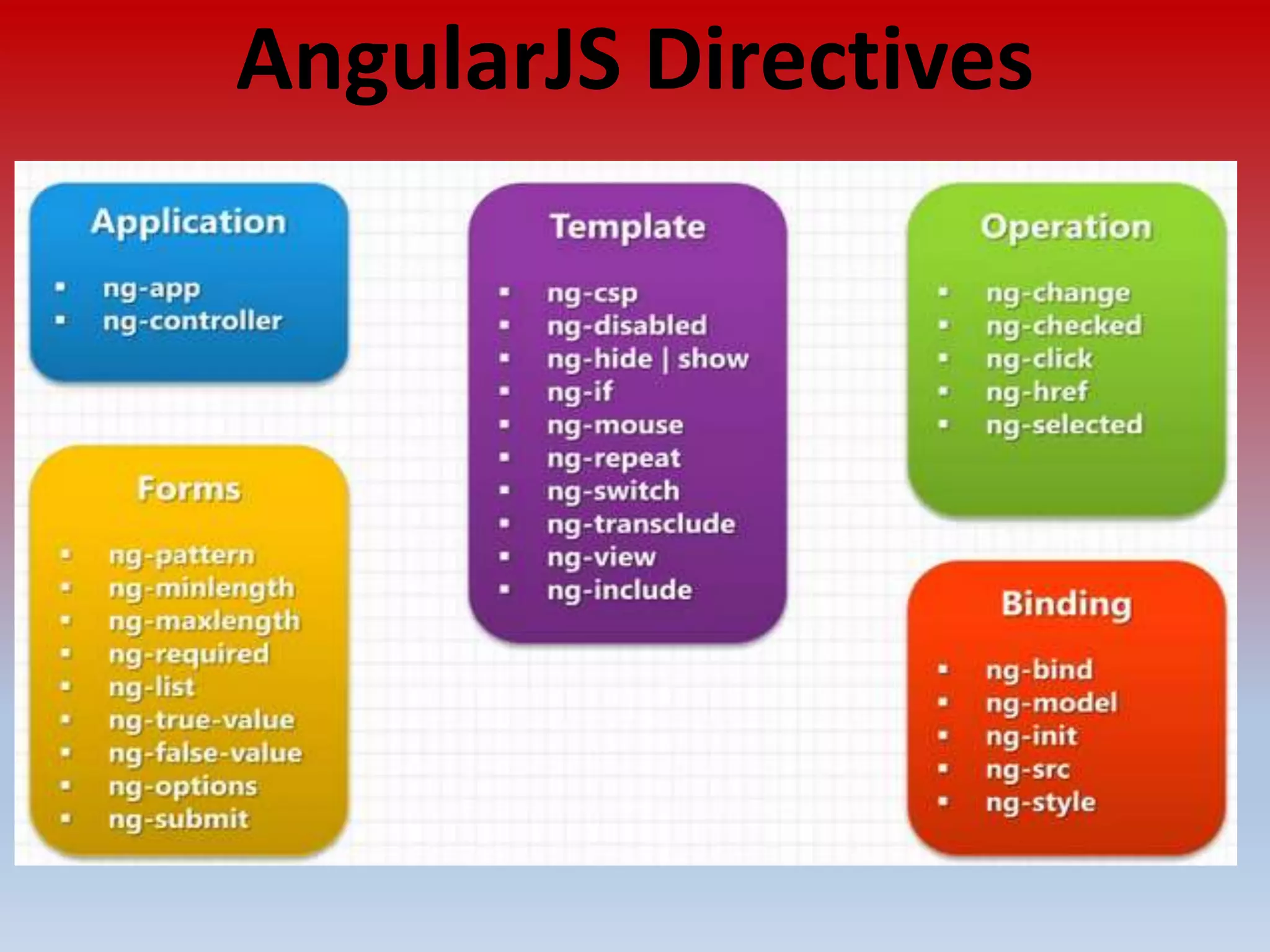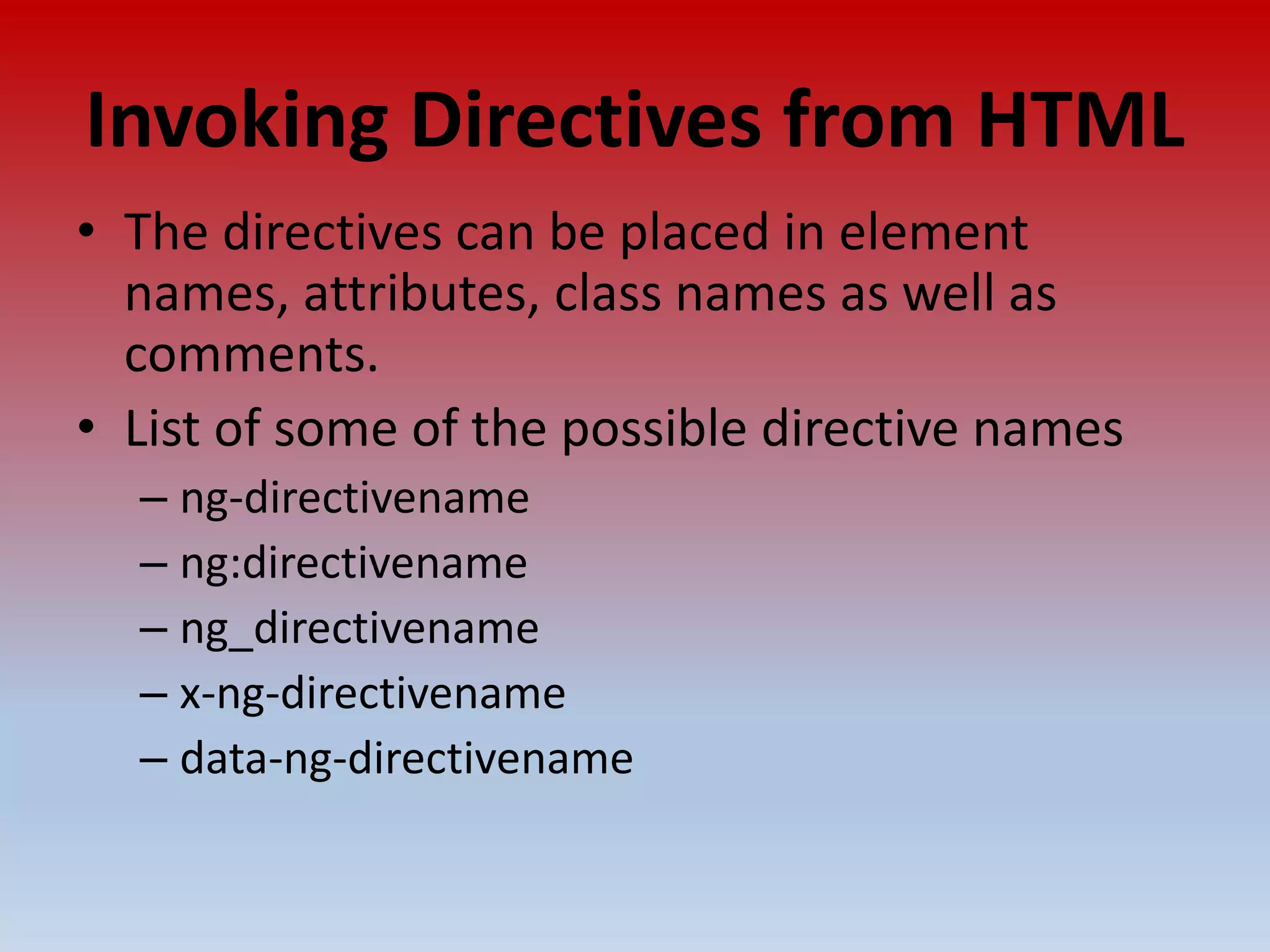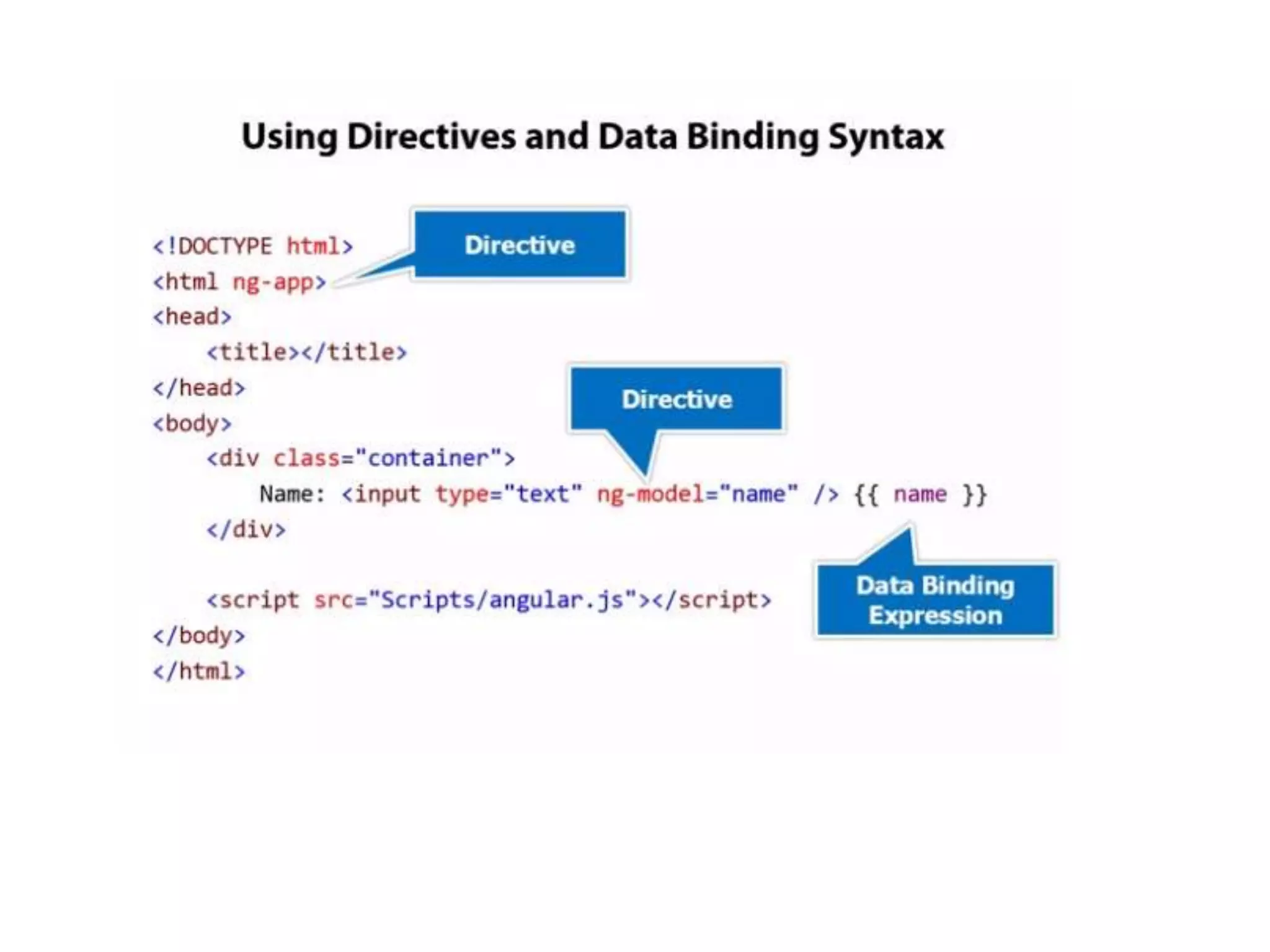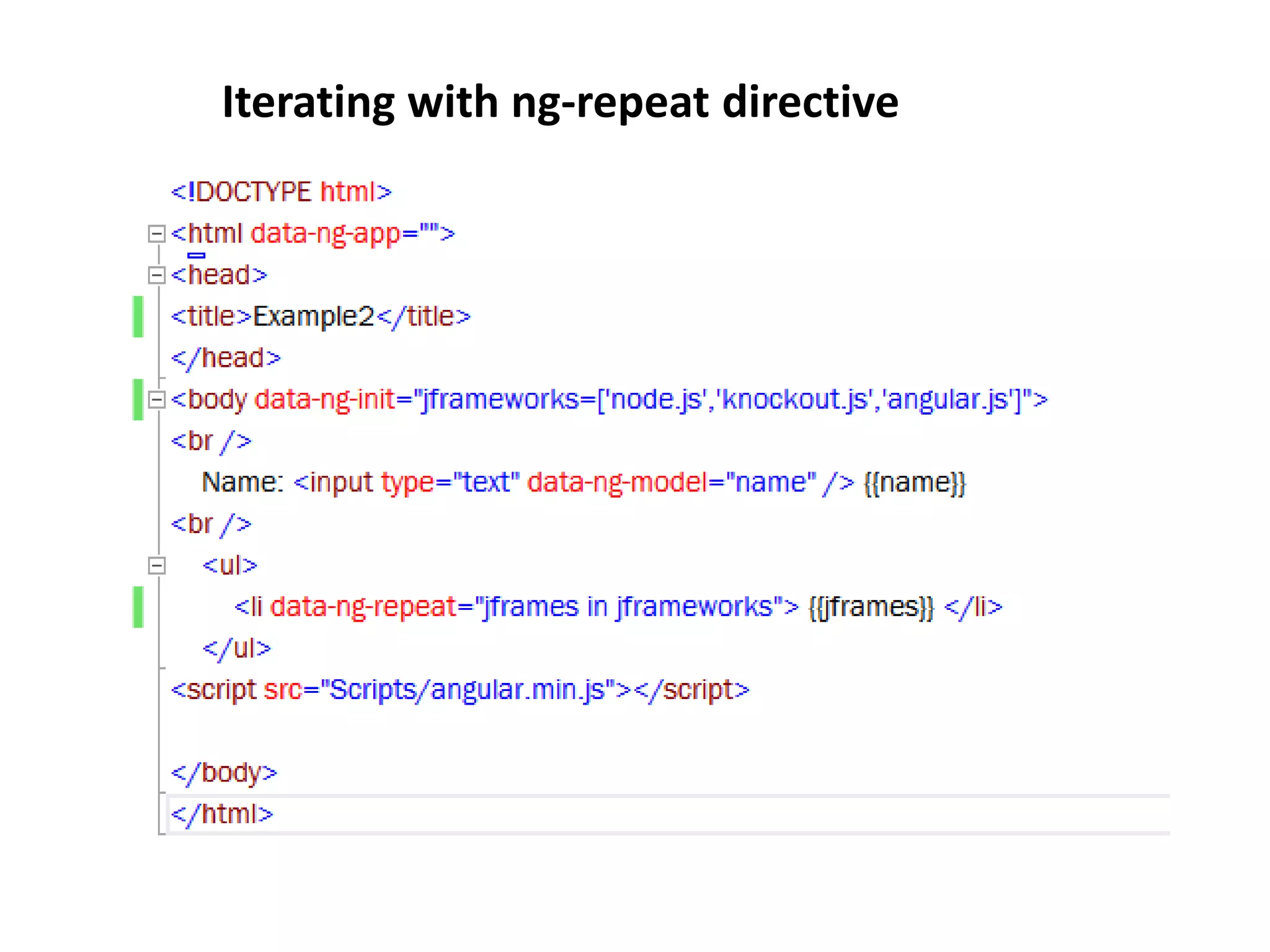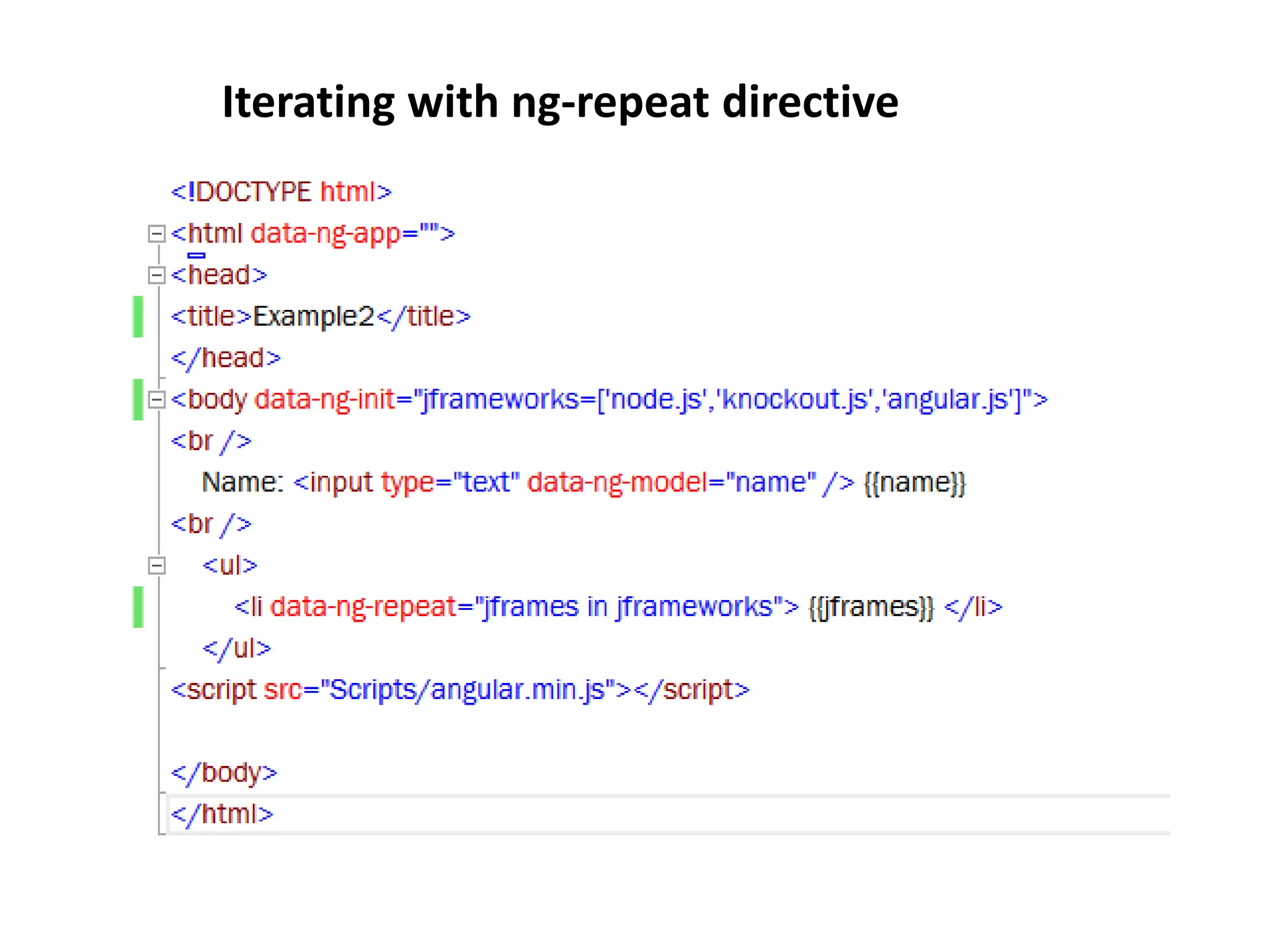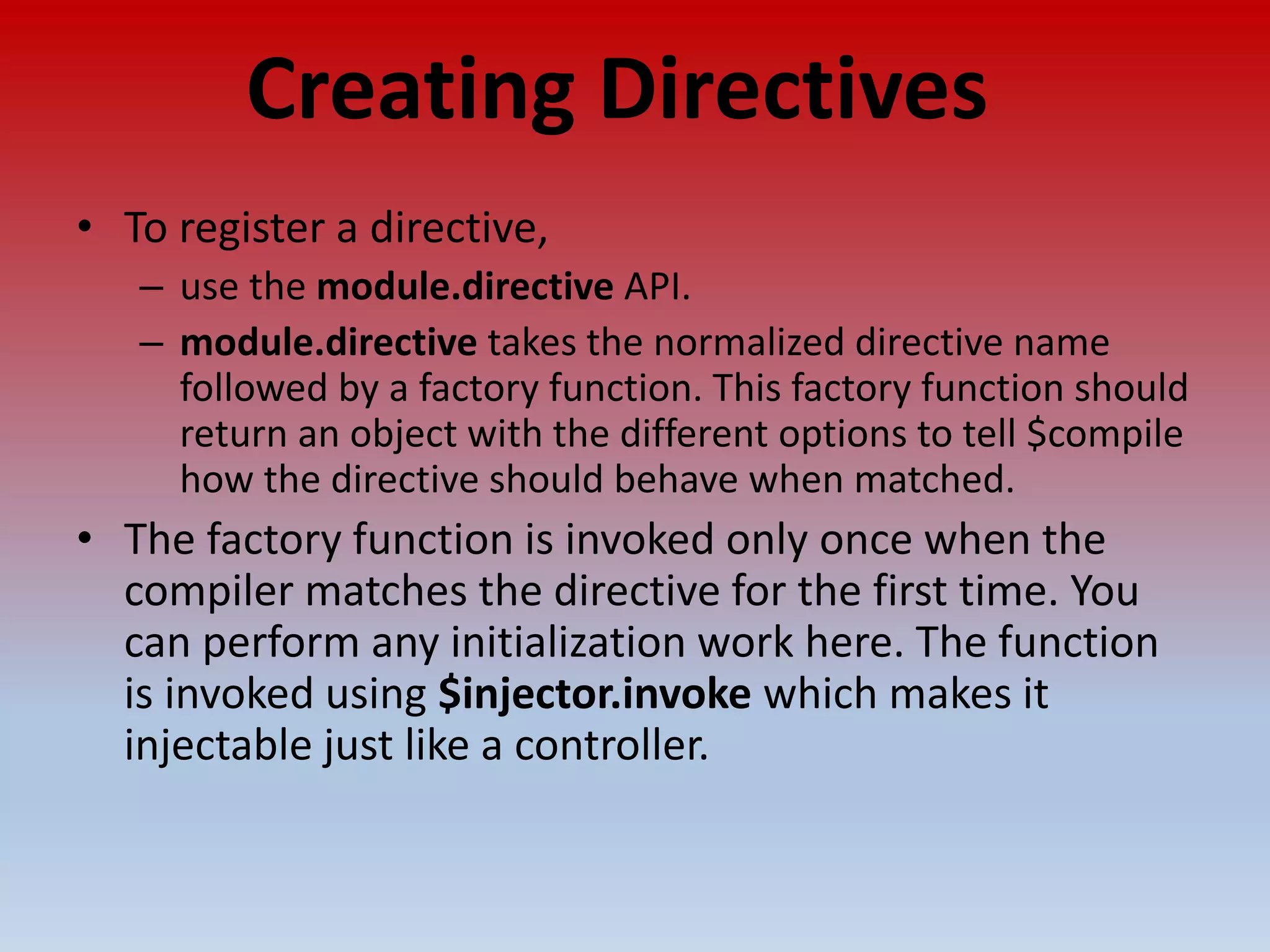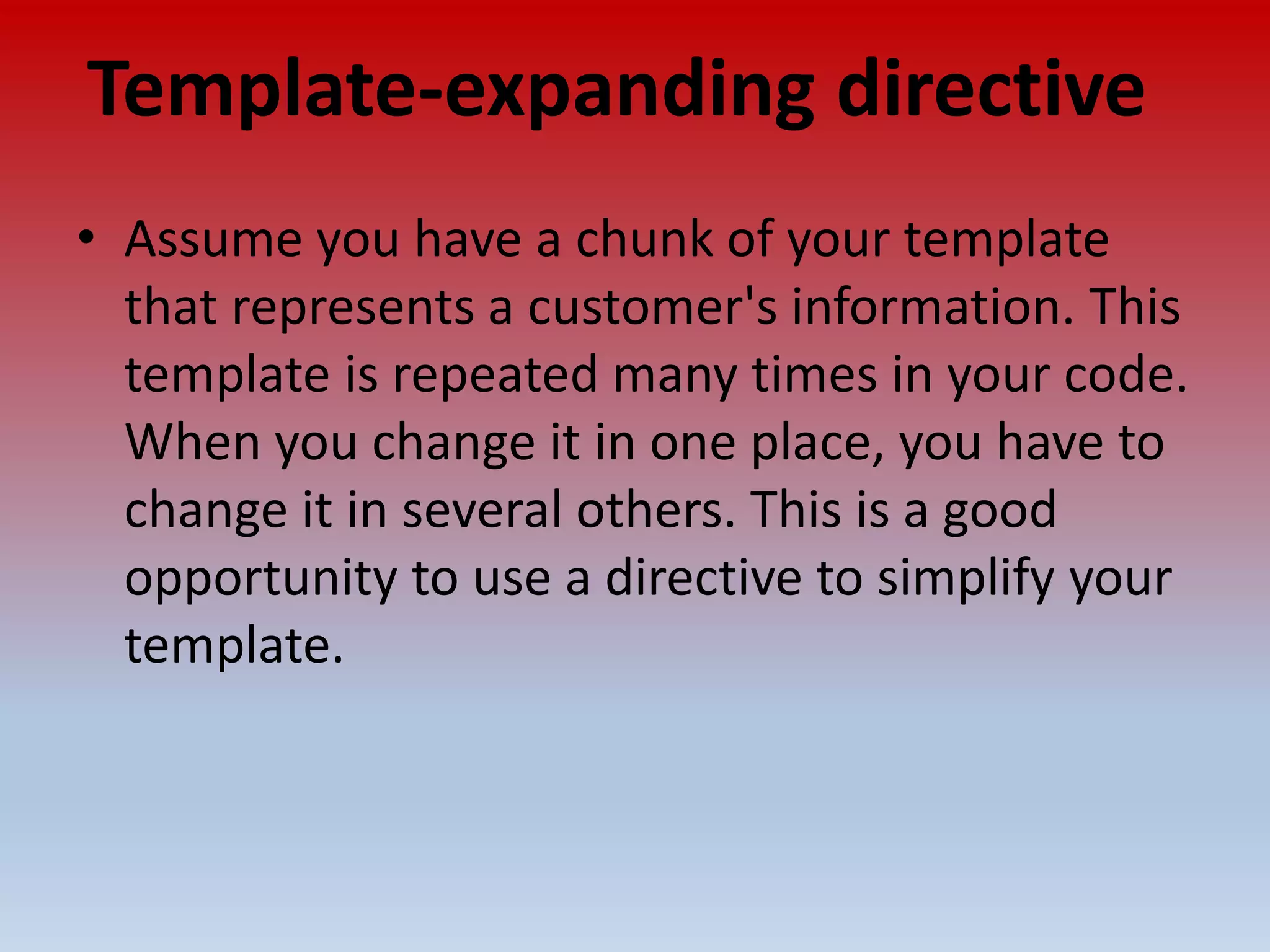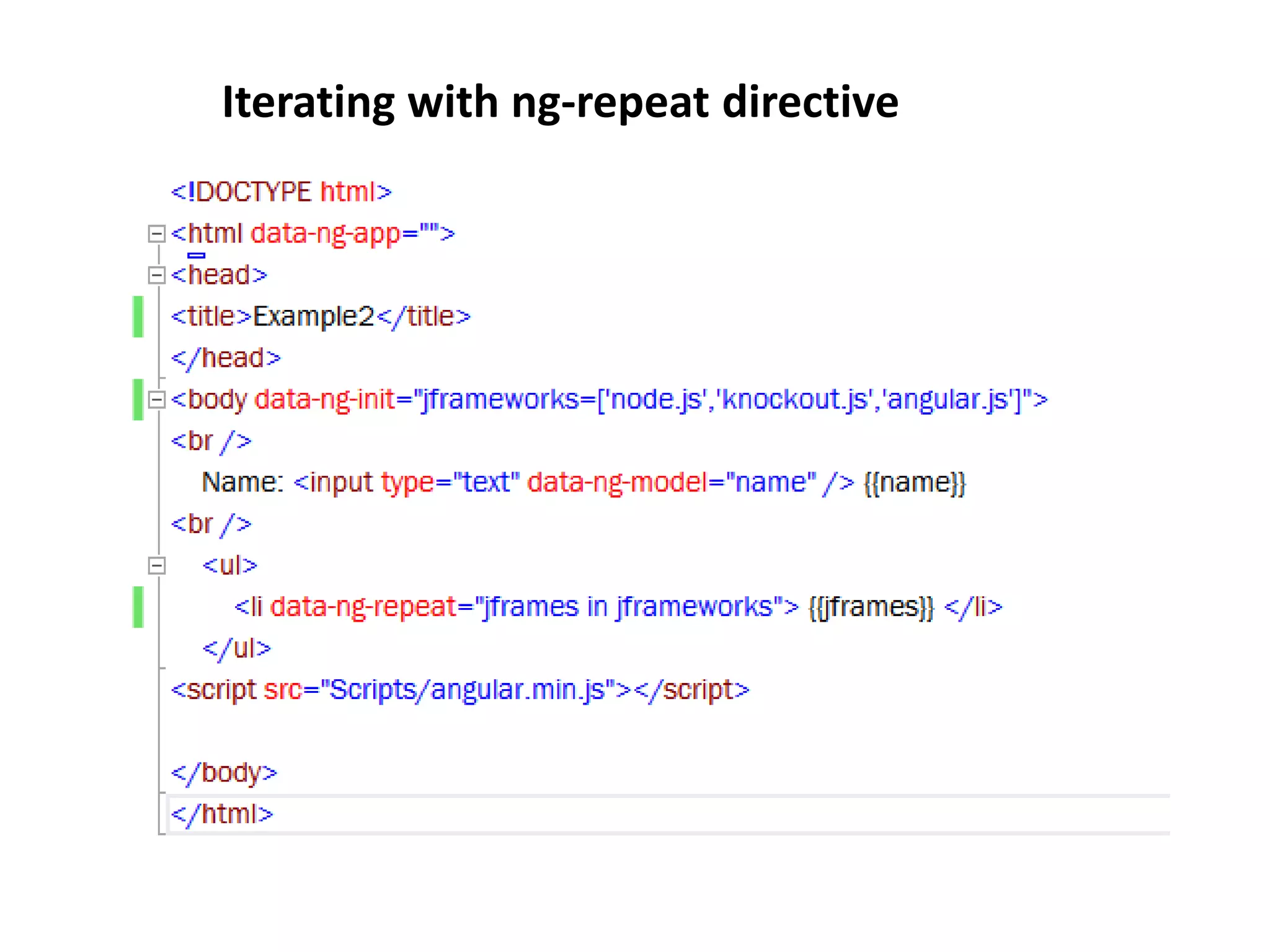This document discusses directives in AngularJS. It explains that directives allow you to create your own HTML syntax specific to an application by teaching HTML new behaviors. Directives can add behaviors, data binding, and extend or replace HTML elements. The document provides examples of built-in directives like ngBind and ngModel and how to create custom directives. It also discusses how directives are invoked from HTML and how the ng-repeat directive can be used to iterate over data.




